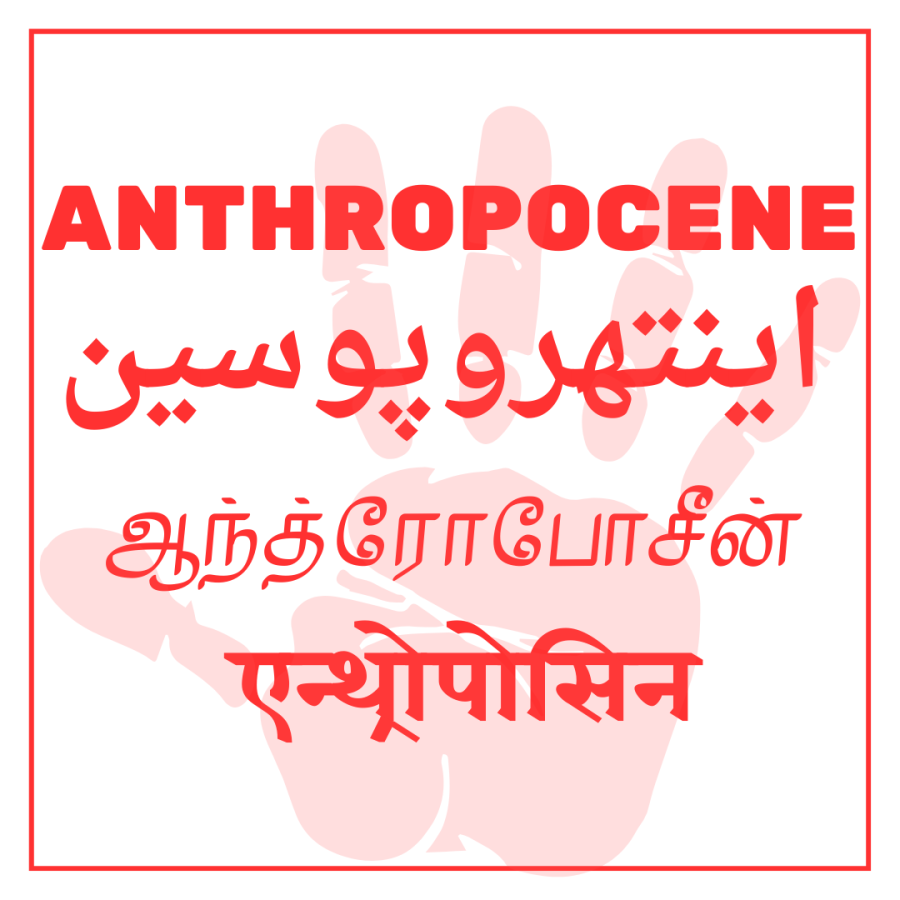Columns
Sleeping through the Anthropocene
South Asia will be the biggest victim of the world’s destroyed natural systems.
Kanak Mani Dixit
We, humans, have changed the world’s ecology beyond the point of recovery, the climate crisis being the bellwether for innumerable interventions that impact the survival of all life forms. The globe has entered the Anthropocene epoch. Geology’s official time-keepers do not accept the term, but it describes what is happening to the planet.
Since all ills associated with this epoch will hurt the poorest, South Asia is getting swamped both literally and metaphorically, for we are the global centre of poverty in number and density. Sadly, South Asians are not in a position to respond locally, nationally or regionally because beyond a few scientists, we are not cognisant of the term ‘Anthropocene’, and there is no cross-border cooperation as we approach the ecological abyss.
South Asia should be leading the climate emergency debate at the COP29 conference, happening now in Baku, but our positioning is weak and scattered even though the moment is existential.
Film South Asia ’24
As the organisers of the biennial Film South Asia festival of documentaries whittled down more than 2,000 submissions to less than 50 for screening (November 21-24), we noted that many films addressed the dangerously skewed nature-human interface. ‘Documentary in Anthropocene’ was selected as the festival theme.
Documentary filmmakers are the ‘canaries in the mine’, with a vocation to inspect, understand and raise alarm. They are on to something that the mainstream media, social media and cinema have mostly neglected: That the world is approaching an ecological tipping point. And who is to say what social, psychosocial, political, economic and cultural dislocations are already playing out all around, amidst our politics and geopolitics as usual?
In mountain regions, species are moving up the slopes, as warming gases are pumped into the atmosphere. The moths of the eastern Himalaya will not be left behind, as described in the documentary Nocturnes. Species are succumbing even before we get the chance to record their existence.
The Indus mud flats are home to unique fish that walk on land and crabs that spit sand-balls (Sometimes Even the Shore Drowns), but Karachi city plans to build housing there. The Jamuna is now a sewer, even though there is no stopping the Chhath worshippers from wading into the toxic foam (Jamna - The River Story).
Everywhere along the Himalaya, melting glaciers threaten villages below, as poignantly depicted in No Monastery, No Village. In low-lying Bangladesh, distributaries cut into villages, destroying lives and livelihoods (Whispers by the River Shore). Human efforts are no match for the fury of avenging nature in the form of Cyclone Remal (Topsy Turvy), nor can the once plentiful sea provide livelihood to fisherfolk (Against the Tide).
The Anthropocene must become part of mainstream discourse, enough for it to be politically charged. Hence, ‘Anthropocene’ must be wrested from English and penetrate the societal epidermis by seeing debate in tea shops and dhabas. Rather than try to seek root words in Sanskrit, Arabic or Persian, ‘Anthropocene’ should serve the purpose.
Global Real Time
The documentaries at FSA ’24 remind us that there is no escape from 4.5 billion-year-old Earth, with the epochs, eons and eras of its existence divided into geological time. The Holocene epoch began with the end of the last ice age around 12,000 years ago, but it was with the Industrial Revolution that the biosphere came under frontal attack of humans, added the Great Acceleration after the 1950s. With the Global South copying the North’s economic models and consumption patterns, there is no stopping this race from Anthropocene to Armageddon.
The cumulative impact of humans is evolving like the asteroid which banged into the Yucatan 66 million years ago, killing off 75 percent of species, from dinosaurs to ammonites. The scientific community has refused to include the Anthropocene formally in the Geologic Time Scale, but the Anthropocene is very much part of Global Real Time.
The term is an appropriate descriptor of the ongoing havoc foisted on nature, incorporating much more than global warming and climate change. We are pushing the biosphere beyond repair as we allow plastics to rule over us, embank rivers, deplete groundwater, force the poor into mass migration, destroy habitat, warm the tundra, mine the sand, add acidity to the oceans and push species to extinction.
Humans changing the environment is an old story, we have a name for it now. Not so long ago, the One-Horned Rhinoceros lived all the way from the Brahmaputra to the Kabul River. The spread of humans eastward shrank the ‘Great Jangal’ of the Indus-Ganga plain, and today, the western-most habitat of the rhino is a small strip of doon in Nepal’s Inner-Tarai.
Those building ‘water management infrastructure’ refused to consider natural silt carried by our rivers, the unique monsoon, cloudbursts and glacial lake outburst floods. Our leaders fell victim to gigantism, and at the very start, in 1954, the Kosi Barrage was inaugurated. ‘Bihar’s Sorrow’ was jacketed between dykes for a hundred kilometres, and in seven decades since, the settling silt has lifted the Kosi’s bed many metres above the outlying plain. A decisive break in the embankment will devastate eastern Bihar, the result of misapplied engineering.
The spread of canals in the upper Ganga supported the Green Revolution, but it brought moisture to the land surface in winter-time, generating extended periods of ground fog (seet lahar) that keeps tens of millions freezing over weeks on end. Meanwhile, for all the press publicity, India and Pakistan will not sit together to address the smog that smothers the population from Lahore to Delhi.
If you really want to know, the advent of kite-flying was against nature’s system, though seen as the most innocent of pleasures. It was and remains a shock to birdlife which had ruled the skies since they evolved, until confronted midflight with the thread that maims and kills (All that Breathes).
Southasian brown cloud
All of a sudden the famous winter fog of Kathmandu has become history, as the Valley transforms into wall-to-wall concrete. In the Valley skies, parakeets screech about whereas they were a feature of lower climes. High on Mount Everest, Sherpa climbers report gurgling water where there was once only hard ice. Climate change seems to be loosening the permafrost of the Himalaya, and all across 2,500 km chain, billions of tons of debris locked into ice may be about to release their grip.
The South Asian brown cloud (or ‘black carbon’) emitted in Punjab, Punjab and Haryana (straw burning, vehicular and coal plant emissions, road and construction dust) casts a pall all the way to Chittagong. When the coating of dark dust settles on snow and ice, the sun’s radiation is absorbed rather than reflected, and we have accelerated snowmelt, glaciers retreat.
In 2023, this Indus-Ganga smog crossed the delta, curled over the Bay of Bengal and reached Sri Lanka and the Maldives. How can there be a tourism industry in Shimla, Pokhara or Darjeeling if you cannot see the Himalaya, or when there is no snow on the himals? Beyond aesthetics and tourism, this loss of snow and ice cover means depleted groundwater to feed the Ganga, ultimately impacting hundreds of millions all the way to the delta.
Haze diplomacy
Forced migration has been a constant theme of documentary films, and we are about to face the Great Migration linked to related Anthropocene phenomena—one, the rising ocean which will not only submerge the atolls but also displace tens of millions along the entire South Asian shoreline; two, the scorching heat above 50 degrees Celsius in the Indus-Ganga plain which will push people to the highlands.
South Asia must be alert to the Anthropocene, our discussion must descend from scientific confabulations and COP events to the peoples’ level. For starters, Nepal needs to begin ‘haze diplomacy’. For the sake of all living beings of the subcontinent from the ocean to the mountain, Kathmandu must demand that New Delhi and Islamabad collaborate to end the South Asian brown cloud.
Nepal, with its geography (steepest cross-sectional incline) and demography (diverse communities living on the gradient), is the barometer of climate change and the Anthropocene. To shake others up, we must wake up ourselves.




 20.12°C Kathmandu
20.12°C Kathmandu














